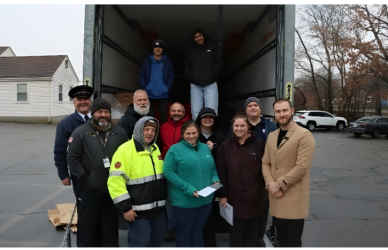Refrigerated trucking is a crucial aspect of the transportation industry that involves transporting temperature-sensitive goods in temperature-controlled trucks. Refrigerated trucking is commonly used to transport perishable goods such as fruits, vegetables, dairy products, meat, and pharmaceuticals. If you’re a trucker who wants to get into refrigerated trucking, it’s essential to know the permits and licenses, federal regulations, and compliance requirements that come with this type of transportation. In this article, we’ll discuss what you need to know about refrigerated trucking to help you understand the requirements and regulations you need to comply with.
Permits and Licenses
To operate a refrigerated truck, you must have the appropriate permits and licenses. The requirements for these permits and licenses vary by state, so it’s important to check the regulations in the state where you’ll be operating. For instance, in California, a special permit is required for trucks with a refrigerated unit. In addition to state-level permits and licenses, you may also need federal permits, such as a motor carrier permit or a hazardous materials endorsement, depending on what, specifically, you’ll be hauling and where.
Federal Regulations
Refrigerated trucking is subject to numerous federal regulations, including the Federal Motor Carrier Safety Regulations (FMCSR) and the Department of Transportation (DOT) regulations. These regulations are designed to ensure the safety of both the driver and the cargo being transported.
For example, you’ll want to be familiar and compliant with the Food and Drug Administration’s (FDA) Sanitary Transportation of human and Animal Food (STF) rules, which establish the requirements for shippers, loaders, carriers, and receivers involved in transporting human an animal food to use documented sanitary practice e to ensure the safety of the food they are moving.
The STF rule is one of seven foundational regulations aimed at creating a modern, risk-based framework for food safety. The goal of the final STF is to prevent practices during transportation that create food safety risks, such as failure to properly refrigerate food, inadequate cleaning of vehicles between loads, and failure to properly protect food.
Reefer Best Practices
This type of work comes with a long list of best practices to keep your load safe, and keep you in compliance, below we’ll go over just a few.
- Select the Best Equipment for the Job
Equipment should be capable of reaching and maintaining specified temperatures for sanitary food transport under normal and customary operating conditions. Once the proper equipment has been selected, it’s important to regularly maintain the equipment including physical and sanitary conditions to ensure it remains suitable for sanitary transport.
- Vehicle Equipment and Storage
If you’re hauling food, it’s imperative that vehicles and transportation equipment be stored in a manner that prevents harborage of bests of becoming contaminated in any other manner that could result in the food become unsafe for consumption.
- Food Safety Plan (FSP)
Food Safety Plans are an industry best practice that results in a cooperative effort between the shipper, loader, carrier and receiver of perishable foods, and should be coordinated such that food is transported in a sanitary manner. In order to accomplish this over-arching goal, clearly defined and written transportation procedures, specifically related to maintaining food safety, should be developed and shared with all parties involved in the transport of perishable foods. These types of plans should include, at a minimum, specifications or parameters for packaging, stowage, temperature management, sanitation and handling. Food safety procedures should be product specific, but can include general as well as specific instructions for maintaining product safety during transit. - Temperature Requirements
The type of goods being transported will determine the temperature requirements and your FSP should include a specific temperature range to be maintained during transport, with specified tolerances that are not to be exceeded. - Time and Temperature Deviations and Corrective Actions
If the maximum temperature is exceeded for cumulative exposition times, the deviation could result in unsafe food. You’ll need to know what actions to take to inspect the product and determine if safety has been compromised., and if so, what correction action to take to prevent further or repeat damage, as well as proper disposal of damaged goods. - Segregation of Goods
Carriers, especially ones engaged in mixed load, less than truckload (“LTL”) and/or multi-stop services, may be held liable for cross contamination if they fail to follow shipper instructions. It is always a good practice to have the shipper include exclusions and instructions when there is a concern. For example, list specific goods that should not be transported in the same trailer (such as fresh produce in ventilated boxes alongside or under fresh poultry). - Sanitation and Equipment Standards
Cleaning and sanitation procedures of containers is a critical step for food transportation. Some products will require very specific cleaning protocols that must be followed to the letter.
Like with every job, there are pros and cons to reefer hauling. Below, we’ve listed a few for your consideration, so you can have a full picture of this type of driving and decide if it feels like a good fit for you.
Pros:
High demand: With the rise of e-commerce and online grocery delivery, the demand for refrigerated trucking has increased. As a result, there are more job opportunities for truckers in this field.
Job security: Due to the specialized nature of refrigerated trucking, it is less likely to be outsourced to foreign countries or automated, which means that truckers in this field have a higher level of job security.
Higher pay: Refrigerated truckers are typically paid more than their non-refrigerated counterparts due to the specialized nature of the work.
Varied work: Refrigerated trucking allows truckers to transport a variety of temperature-sensitive goods, which can make the job more interesting and challenging.
Industry advancement: As the industry continues to grow, there may be opportunities for truckers to advance to managerial or training positions.
Cons:
Equipment maintenance: Refrigerated trucks require specialized equipment and maintenance to ensure that the cargo stays at the correct temperature. This can result in higher maintenance costs and potential breakdowns.
High pressure: Due to the time-sensitive nature of temperature-sensitive cargo, there may be increased pressure on truckers to deliver the cargo on time, which can be stressful.
More Regulations: Truckers may need to obtain additional permits and licenses to operate a refrigerated truck, depending on what they’re hauling and where they’re hauling it. This can sometimes be time-consuming and costly. In addition, you may need to follow some very specific protocols for temperature and sanitation depending on what you’re hauling. Failure to comply with these regulations can have costly consequences.
Weather concerns: Extreme weather conditions, such as hot summers or cold winters, can make it difficult to maintain the correct temperature inside the truck.
Refrigerated trucking can be a rewarding career choice for truckers who are up for the challenge. While there are certainly some drawbacks, the higher pay and job security can make it a worthwhile endeavor. Ultimately, the decision to get into refrigerated trucking will depend on each individual’s preferences and priorities. For those who enjoy a varied and challenging work environment, however, refrigerated trucking can offer a fulfilling career path with room for advancement in the future.











